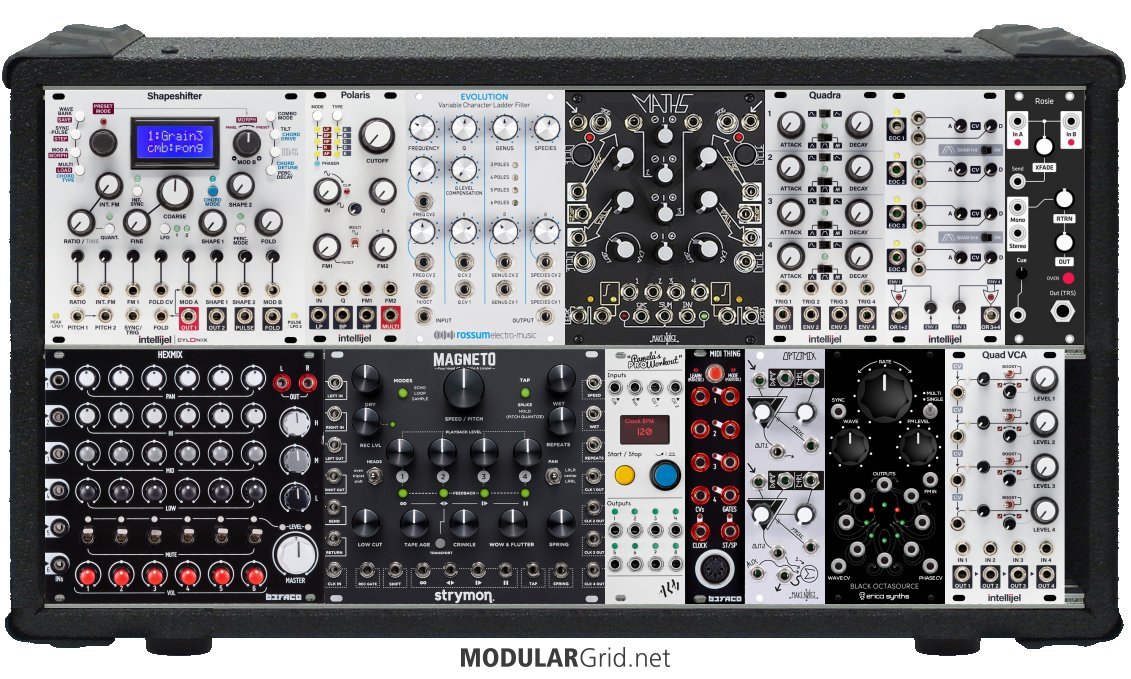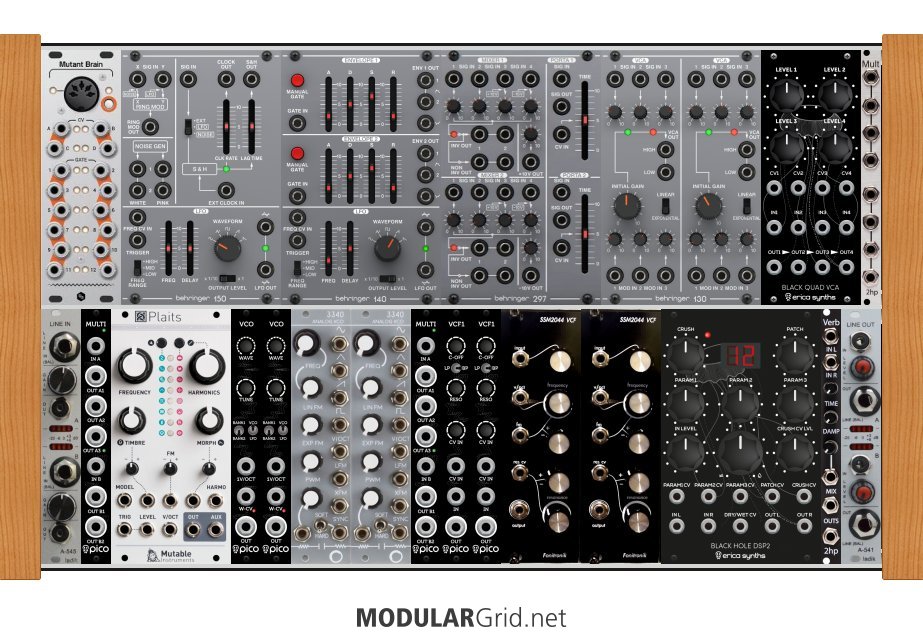Sorry for the lengthy reply in advance, but just wanted to respond to a few comments that I missed earlier.
You're getting a lot of advice, but you're the one who knows best what you want to do with your devices. Treat everything as potentially useful information rather than authority. And go slowly!
-- plragde
Of course. I'm just trying to get as much advice as possible so I can (hopefully) decide on a starter rack that is logical and help me on my journey.
good thinking!
Remember that OS 1.3 means your Digitakt can mix input from your modular, pan it dynamically, and apply its effects (and a similar Digitone update is considered likely). Both the Digitakt and the A&H can deal with Eurorack-level signals, but an output module is convenient.
-- plragde
Oh wow, I didn't know this! That's awesome. Out of curiosity - what would be the best way to do this without an output module? I've also got the A&H ZED60-FX mixer, so any recommendations there would be appreciated!
3.5mm->1/4" cables, turn everything down on the mixer and bring up slowly - you probably won't need any gain on the mixer
if it still clips then use passive attenuators - 2hp trim, for example - they are cheap small and can be set and forget once you get the levels right
The A&H mixer has 2 headphone sockets - why not just use 1 of them for now? you can add a headphone output in the future if you find you need it!
-- JimHowell1970
I always thought that was the whole point of output modules in eurorack, but seems like I've been wrong about that. As I've asked @plagde - what's the best way to connect it to my mixer/headphones without an output module?
they are kind of like medicine - you only need them if you need them - if you need balanced outputs then you'll need them - if you have noise on the output then they are worth trying - but only once you have tried attenuators - and unbalanced outputs are really just attenuators so if you are going to go for an output module buy balanced/isolated ones
I like FX Aid XL will make a great addition
-- JimHowell1970
I think I'm definitely going to get one of these. After watching a few videos it looks absolutely amazing!
the only way I'm going to get mine is if and when they offer the FX Aid XXL - there is talk of one with a screen etc, but that's a way off - and only then if I've bought the one with the screen and I can't live without it on my existing one!
a disting (mk4 or ex) would be a great addition
-- JimHowell1970
I've been doing a bit more research and can see now why a lot of people recommend the Disting MK4 and uO_c modules for a small rack like this. I'm considering adding a uO_c to the rack for quantizing the Digitalis and experimenting with its other uses, then maybe get a Disting after, as it seems like it's a good option to "test" out other functions to help plan future expansion. Do you think this is a good idea? I thought the Marbles and PNW already could already do quantizing, so am I missing something when everyone says the MD needs a quantizer?
Disting is great for auditioning different types of module - don't rush trying all the different algos - this is how people seem to get to hate them quickly - favourites are the way to go - if you find yourself using the same algo constantly replace that with a dedicated module and move on...
Marbles and PNW can both quantize their internal signals and apparantly external signals as well, but I've never used them for this - I have never used Mimetic Digitalis - but I just skim read the manual and it does not appear to have quantization functions - if you want it's outputs to be quantized, then it's probably better to quantize - there is no guarantee that what it records and plays back is pitch perfect - some voltage droop may be experienced I don't know... so if MD users are saying to get a quantizer, I'd be tempted to listen!
Saying that I almost always use a quantizer on the outputs of Marbles, when I use that for sequencing, but the quantizer I use is sinfonion - which also adds chord progression sequencing and an arpeggiator
Also would having the Salmple, PNW, uO_c and Disting be too much menu diving? I'm trying to avoid this but from what I've seen it doesn't seem too bad. Ideally I'd prefer 1 knob per function but can live with a little menu diving.
only you can answer that one - I don't own the squid salmple or O&C - but the menu systems on both PNW and Disting are not too bad...
Maths not required. If you want more plucky sounds you have a low pass gate built into plaits. From what I can see he likes using plaits to give chord drones. He is using md to drive the melody in the 0 coast.
-- greenfly
This is good to know, thank you. I'm thinking of getting a uO_c instead of the Maths and possibly a Disting MK4 after (as mentioned above). Assume this could open up a world of possibility and keep me busy in the meantime?
Maths is not required - correct, BUT I think it's the best module for learning modular synthesis there is due to the 'maths illustrated supplement'
it's important to note some people into modular synthesizers are not really into modular synthesis - they're only interested in connecting a few modules together to make some sounds - both are equally valid approaches - as is a middle ground!!!
I want to underscore what Lugia said about MD needing a quantizer
-- plragde
Yeah this seems to be the general consensus. But as I've asked above in this response. Doesn't the Marbles and PNW act as a quantizer also? And I'm guessing the uO_c or Disting is the solution to this? Seems like the Ladik Q-040 is hard to come by, so maybe I'd be better off with the former as I could also use it for envelope generation, etc?
see above
Ladik is only available from Ladik - they are easy to get hold of you just buy them direct!!!
3xVCA, if you can get it, is a fine bridge to Veils 2020
-- plragde
Good to know! I can't seem to find one for sale. Would the ALM Tangle Quartet work as another solution? Or are there any other alternatives you could recommend?
Intellijel quad vca? or just wait until the one you want (Veils 2020) is available - remember you can never have too many vcas!!!
Also I realised I didn't include any reference videos to the style of ambient that I'd like to make, so better late than never.
This is pretty much the exact style of ambient I am referring to. So Ideally I am trying to build a system that can do both styles of music like the original videos I posted, along with these ones. Am I on the right track with my current setup? I can't really see / am not familiar with the modules in the first video, so would like to know what recommendations everyone has with this in mind. Could the system Lugia proposed achieve this?
Almost any modular system can produce any type of music to some extent - it's an instrument like a guitar - the player is more important than the instrument - go slowly and you will get the right modular for you and your workflow
Thanks again to everyone for the super insightful and knowledgeable feedback. I will post a picture of my final starter rack once I've decided on my final shopping list in case anyone is interested. I feel like you all are invested in this journey with me now, ha :)
-- calmfarmer
don't post a picture - post a link to your public rack!!!
"some of the best base-level info to remember can be found in Jim's sigfile" @Lugia
Utility modules are the dull polish that makes the shiny modules actually shine!!!
sound sources < sound modifiers < modulation sources < utilities


